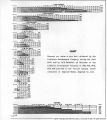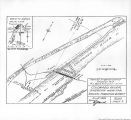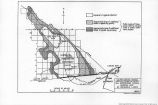| OCR Text |
Show 14 THK AT.T.-A"MTTRTC!A"W make an extensive reconnaissance of the river. He visited the river, however, and says: Below Yuma the river flows through a delta country which is constantly being built up by the large quantity of silt carried by the river. The channel is unstable and can not be made stable at reasonable cost. At present the principal channel in Mexico passes through Volcano Lake. In addition to the fact that this part of the river lies in a foreign country, it should be noted that there is so little water available in the river below the heading of the Imperial Canal during low stages that navigation throughout the year is impracticable. The amount of water extracted from the river for irrigation will increase rather than decrease. After referring to the fact that the growth of commerce along the river would imply an increase of the demand for irrigation water, Maj. Raymond concludes that- the improvement of the Colorado River for navigation would defeat its own ends and would be a detriment to the adjacent country, except possibly that flood control would be beneficial. He finds the situation such that he does not even recommend a survey of the river, and says: Attention is invited to the conclusion reached by officers who have examined this river heretofore, which agree with my own. The development of the country by irrigation in recent years makes the improvement even less desirable to-day than it was formerly. OPERATIONS IN MEXICO. The Imperial Irrigation District, by ownership of corporation stock, controls the Mexican corporation now known as the Compania de Terrenos y Aguas de la Baja California (S. A.), and through the agency of this company maintains and operates the sections of the canals in Lower California which bring Colorado River water into the district. The anomalous situation is thus presented of an irrigation district organized under the laws of California, being dependent upon a Mexican corporation operating canals in foreign territory under foreign laws for its irrigation water, and in large part, too, for its domestic water. Not only this, but the district must make use of the Mexican corporation for protection against the disaster that would result if the Colorado River were allowed to send its flood northward into Sal ton Basin instead of southward into the Gulf of California. Through the agency of the Mexican corporation the district is and has been expending large sums on such protective work. A bond issue of 82,500,000 in 1917 included $500,000 for work on levees and the like in Mexico; this has been expended, as has also $500,000 of an earlier district bond issue. Over $700,000 for additions to the protective works in Mexico are to be included in a new bond issue already recommended by the engineer of the district. Messrs. Elwood Mead, D. C. Henny, and Joseph Jacobs, in a report dated March 5, 1917, and addressed to .the Secretary of the Interior and the president of the University of California, present an exhibit |
| Source |
Original book: [State of Arizona, complainant v. State of California, Palo Verde Irrigation District, Coachella Valley County Water District, Metropolitan Water District of Southern California, City of Los Angeles, California, City of San Diego, California, and County of San Diego, California, defendants, United States of America, State of Nevada, State of New Mexico, State of Utah, interveners] : California exhibits. |




































































































































































































































































































































































































